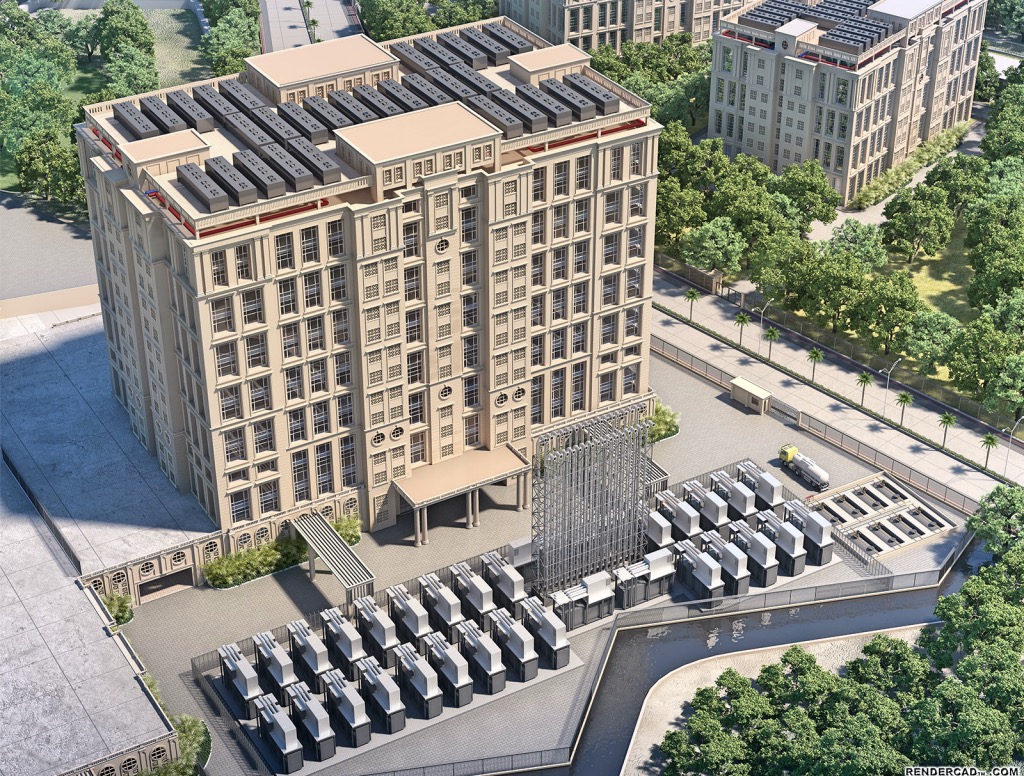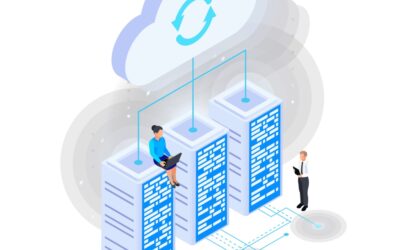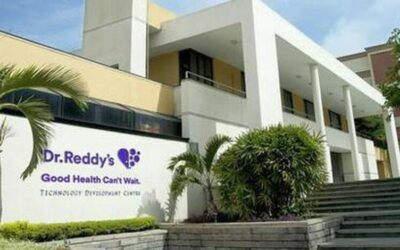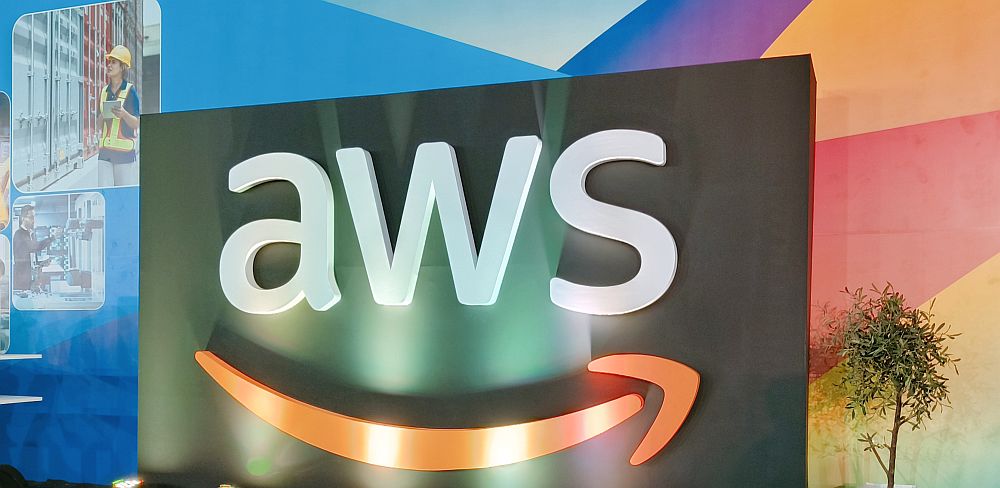UPDATED: The next opportunity for India (after software and services) could be data centers. In fact, India could become the world’s data refinery and storage hub. This was a key suggestion made today by Shri Ravi Shankar Prasad – Hon. Minister for Communications, Electronics & Information Technology and Law & Justice, Govt of India. He was speaking at the inauguration of India’s largest data center building, Yotta NM1. The Uptime Institute Certified Tier IV (Design) data center was built in less than 12 months by Yotta Infrastructure, a Hiranandani Group subsidiary and a Managed Data Centre Service Provider. Yotta is developing hyper-scale data centre parks in India, with the first such park in Navi Mumbai, Maharashtra.
The data center was inaugurated in a virtual event in the presence of Shri Uddhav Thackeray – Hon. Chief Minister, Govt of Maharashtra, Shri Ravi Shankar Prasad – Hon. Minister for Communications, Electronics & Information Technology and Law & Justice, Govt of India and Sh. Subhash Desai – Hon. Minister of Industries and Mining, Govt of Maharashtra. It is the largest Tier IV Data Center certified by Uptime Institute in Asia and the second-largest in the world.
With proximity to Mumbai and Pune, Yotta NM1 Data Center is located in the 600-acre Hiranandani Fortune City in Panvel. Yotta NM1 is first of the five data center buildings coming up at this Integrated Yotta Data Center Park, which, once fully built, will have an overall capacity of 30,000 racks and 250 MW power. At 820,000 sq. ft, 7,200 racks, 50 MW of power and 4 redundant self-owned fiber paths connecting the DC to national highways, the first DC Yotta NM1 itself offers a highly scalable data centre infrastructure, capable of hosting global cloud, content and OTT operators besides the mission-critical applications of enterprises and governments. The ultramodern building, supported by a highly redundant on-site power infrastructure shall soon be powered by its own captive solar power plant and an on-site captive gas-based co-gen power plant thus delivering to its hosted customers long term reliable, green and cost-effective source of power.
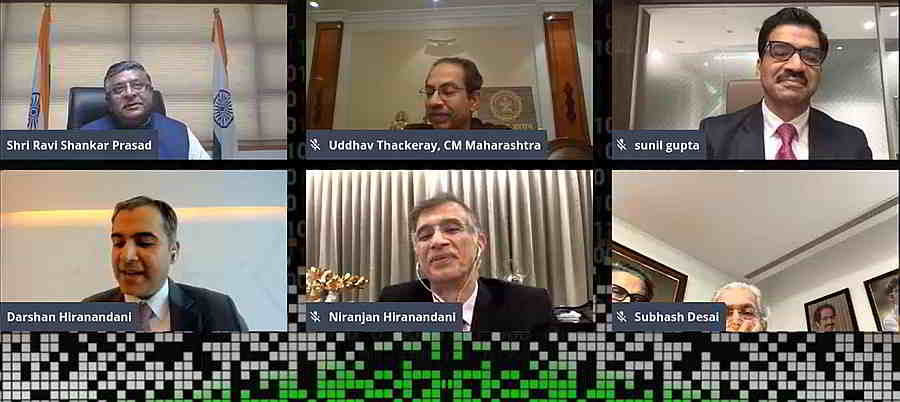
Speaking at the virtual event, Shri. Uddhav Thackeray, Hon. Chief Minister, Govt. of Maharashtra, reiterating the importance of Data Centers said, “Govt of India said, Covid-19 has made the digital future into a reality and given us a new perspective on life. The Maharashtra government is inviting investors to come to our state to do business here and we will extend all support and cooperation to them. We’ve launched the Maha Jobs portal just yesterday for job seekers from the state and also to facilitate workers for industries to act a bridge between employers and employment seekers. By the evening we received thousands of applications and it is a great example of the power of Digital. Working from home has also been made possible by a robust digital infrastructure even in the face of a pandemic and the Hiranandani’s are enabling work of the future today with Yotta Infrastructure. The government of Maharashtra will extend all support towards this endeavor.”
This particular data center is a powerful statement of intent that India is rising high in the quest of data security, data use and data innovation. For the success of Digital India, we must become a big global Data Refinery – data cleaning, data processing, data innovation and research – and all of this will need to be done keeping in mind data privacy laws. We shall never compromise on the data sovereignty of India. The data economy has a lot of potential and in all its promise – a good data center is the pillar it builds on.
—Shri Ravi Shankar Prasad – Hon. Minister for Communications, Electronics & Information Technology and Law & Justice, Govt of India
Shri Ravi Shankar Prasad, Hon. Minister for Communications, Electronics & Information Technology and Law & Justice, Govt of India said, “A good data center infrastructure is critical for a robust digital economy and with this data center the Hiranandani Group has yet again delivered on their standards of creating a new benchmark in every industry that they operate in. Under the vision of the Honorable Prime Minister we have launched the Digital India initiative – to empower the country with technology, bridge the divide and bring digital inclusion, and all of this must be achieved through technology that is homegrown. This particular data center is a powerful statement of intent that India is rising high in the quest of data security, data use and data innovation. For the success of Digital India, we must become a big global Data Refinery – data cleaning, data processing, data innovation and research – and all of this will need to be done keeping in mind data privacy laws. We shall never compromise on the data sovereignty of India. The data economy has a lot of potential and in all its promise – a good data center is the pillar it builds on.”
With the pandemic fast-tracking the digital transformation efforts across enterprises and mass transition to remote working, Canalys Global reported that cloud spends were at a record high in Q12020, up 34% during the time. As enterprises increase their dependency on cloud services, and as India becomes increasingly digital, shifting speedily to web collaboration, e-commerce, e-payments, emerging technologies like AI, ML, IoT, Robotics, connected cars, and as 5G adoption permeates, the resultant growth in generated data is humongous and requires a massive buildout of evolved data processing and storage facilities i.e. data centers. Initiatives under the Digital India campaign are further accelerating the growth in India’s data center industry.
RELATED STORY: Why Data Centers in India are Going Hyperscale
Commenting on the development, Dr Niranjan Hiranandani, Co-founder and Managing Director of the Hiranandani Group, said, “Enterprises and Governments are now focusing more than ever before on Self-Reliance (“Atmanirbhar”) in their supply chains within the country, also leading to more emphasis on data privacy/protection and consequently on data localisation. The demand for hyper-scale data centers is on the rise, thanks to the Government’s push for the National E-commerce Policy and proposed policy on Data Center Parks. Also, with the new normal established due to COVID-19, reliance on technology from enterprises and consumers has increased. All these factors together make for a tremendous growth story for data centers in India. What makes the Yotta story unique is our ownership of all key input resources, massive economies of scale with our land banks, captive green energy generation and distribution capabilities and unmatched expertise and experience in Data Center domain including design, engineering, construction and operations.”
“This data center is a global pioneer not just in terms of capability and price but more so in terms of its focus on efficiency and sustainability. We provide the most efficient power offering available in the market today – not just the lowest price of power but also a Power Usage Efficiency or PUE that is a global benchmark for the tropics. That is only phase zero (0). Our plan to migrate to renewables and gas-based combined heat and power generation onsite will give us chilled water at the most efficient cost structure possible and will bring our design PUE numbers down to 1.2 – again unheard of in Indian weather conditions. But we do not plan to stop there. We are building facilities today to ensure that we can be future ready to be 100% run on renewables whether offsite, through solar and wind coupled with onsite hydrogen based co-generation and fuel cells in the future.”, said Darshan Hiranandani, Group CEO – Hiranandani Group.
Besides Navi Mumbai, Yotta is also developing similar sized giant Data Center Parks at Chennai and New Delhi. Each of these parks will feature more than 20,000 racks, 200 MW plus power and multiple self-owned fiber paths connecting the Park to the main highways. Yotta envisages to spend about INR 3500 crores in next 3 years and about INR 15,000 crore over next 7 to 10 years across these Data Center parks.
Sunil Gupta, Managing Partner & CEO – Yotta Infrastructure, said, “Foreign hyperscale cloud players, and OTT companies are looking to setup large bases in India. A hyper-scale Data Centre Park with the scalable ecosystem of power, fiber and skillsets, like what Yotta offers, gives them quick access to large colo capacity from day one from a multi-tenanted data centre like NM1 and also gives them long term sustainability at the same site with the availability of customised single tenanted data centres and in-campus fiber networks. Enterprises can expect from Yotta a fully managed hybrid IT infrastructure – combination of colo, private cloud, public cloud and IT management skills on a low-risk, pay-as-you-use model, that creates a win-win situation for everyone. Yotta hit the ground running within a year, and I am pleased to say that the interest garnered by Yotta from enterprises has been overwhelming. We are pleased to house many anchor customers at Yotta NM1 already, and the list will only continue to grow.”
DC Analysis
COVID-19 has disrupted business models and forced businesses to accelerate their digital transformation plans. Before COVID-19, 70% of workloads were yet to move to the public cloud, according to Gartner. But this is likely to change now. The demand for cloud services is likely to soar in the next few months, and Yotta Infrastructure’s timing couldn’t be more perfect. Its Indian and global customers are going to generate much more data now, since all services are being digitalized.
But even before COVID-19, DIGITAL CREED observed other data center providers building capacity. We have visited Netmagic Solutions many times and spoke to their senior leadership. STT GDC and CtrlS are also building more data centres in India, and we have had discussions with their leadership too.
The demand for data centers (pre-COVID) is driven by the government’s Digital India drive. Aadhar authentication (a national identity for Indian citizens) is generating tons of data. Add to that India’s low data rates and soaring mobile data consumption, and data generation by consumers. Government to citizen services are also being digitized — Indian citizens can now apply for passports, birth certificates, and other documents through portals.
India also presents the right atmosphere for data centers, with improved power infrastructure, the availability of land, and a healthy political climate. Microsoft, Amazon, Oracle, and other tech heavyweights all have plans to increase their data center footprints on Indian soil.
So India has indeed become a top global destination for data centres and joins countries like Ireland, UK, Singapore, New Zealand, Japan, and the UAE.

